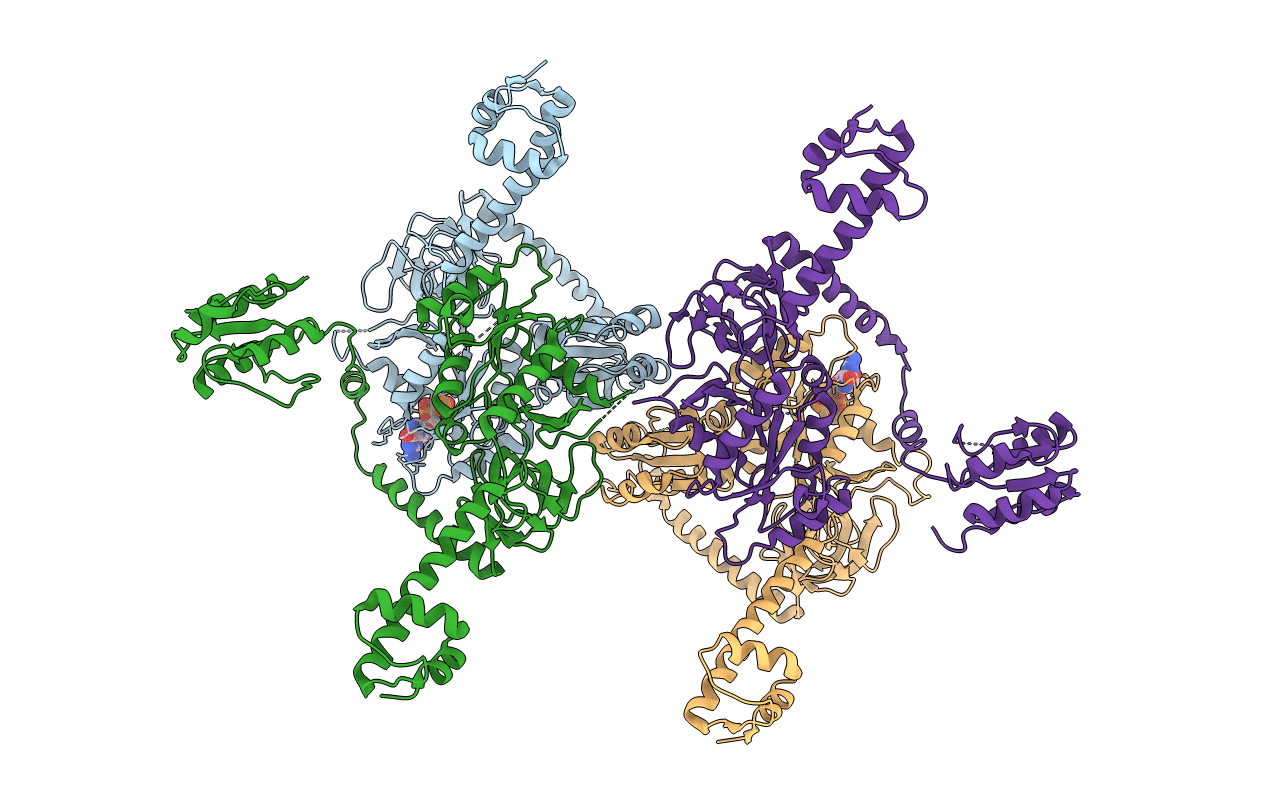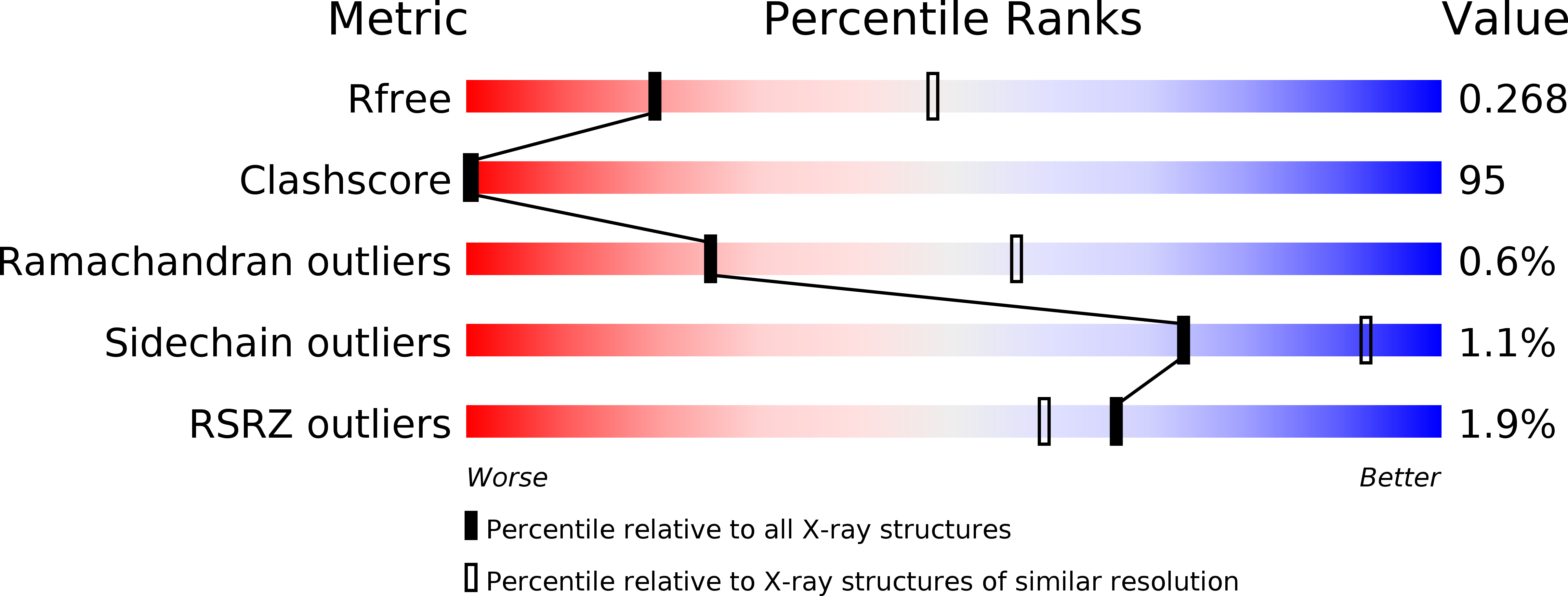
Deposition Date
2013-05-04
Release Date
2013-09-11
Last Version Date
2023-09-20
Entry Detail
PDB ID:
4KJZ
Keywords:
Title:
Crystal Structure of Thermus Thermophilus IF2, Apo and GDP-bound Forms (2-474)
Biological Source:
Source Organism:
Thermus thermophilus (Taxon ID: 300852)
Host Organism:
Method Details:
Experimental Method:
Resolution:
2.80 Å
R-Value Free:
0.27
R-Value Work:
0.23
R-Value Observed:
0.24
Space Group:
P 1 21 1


